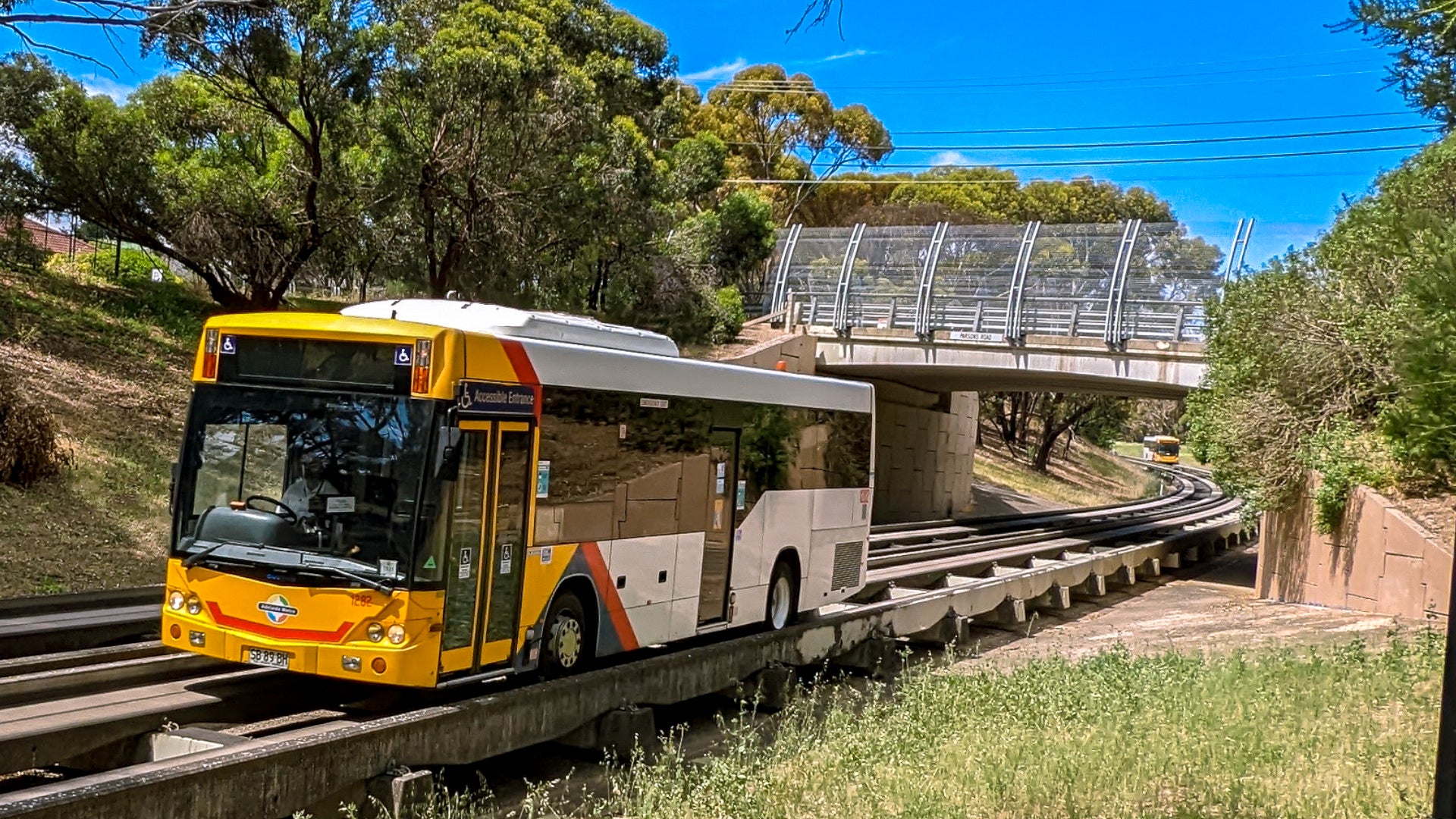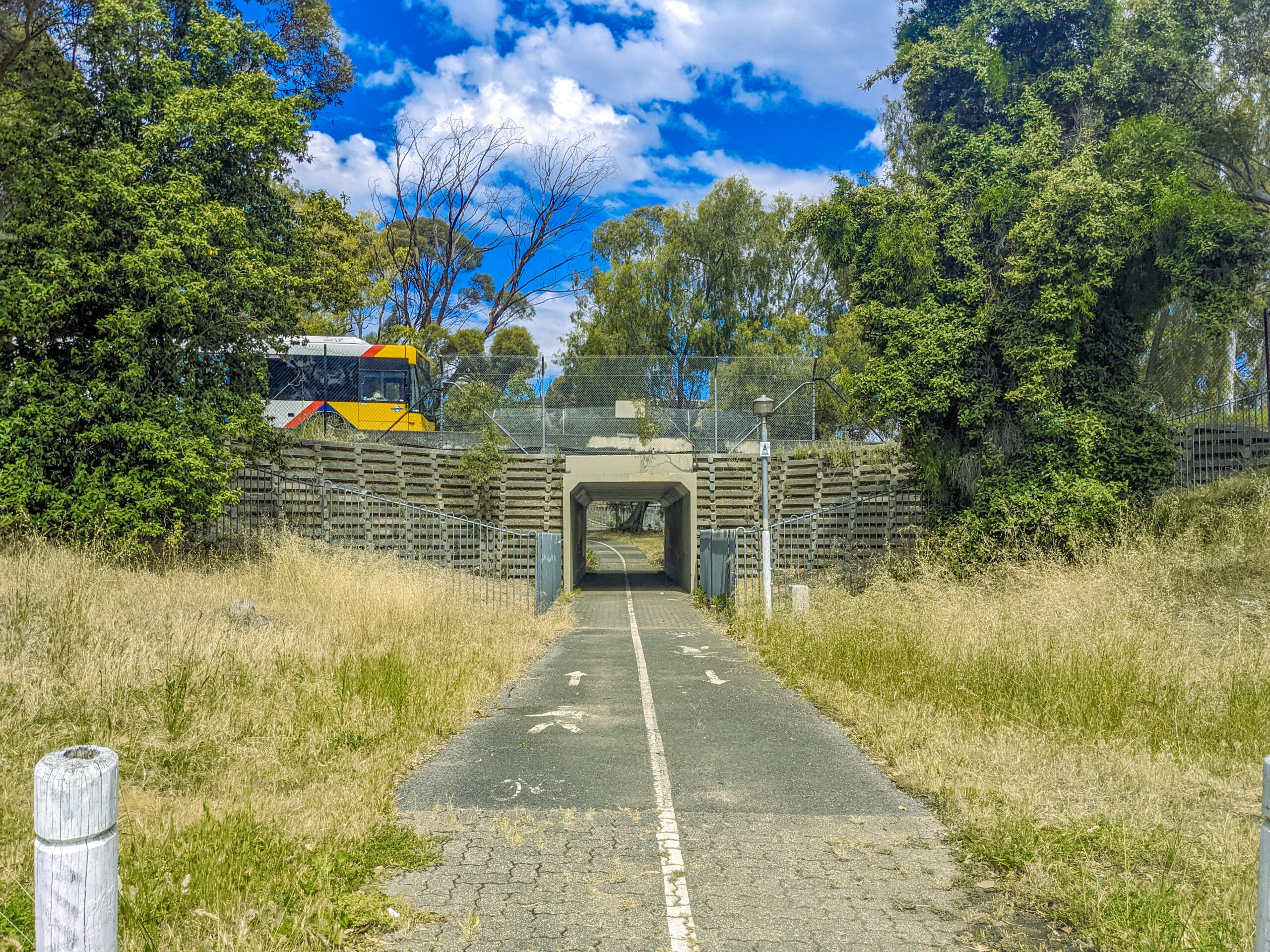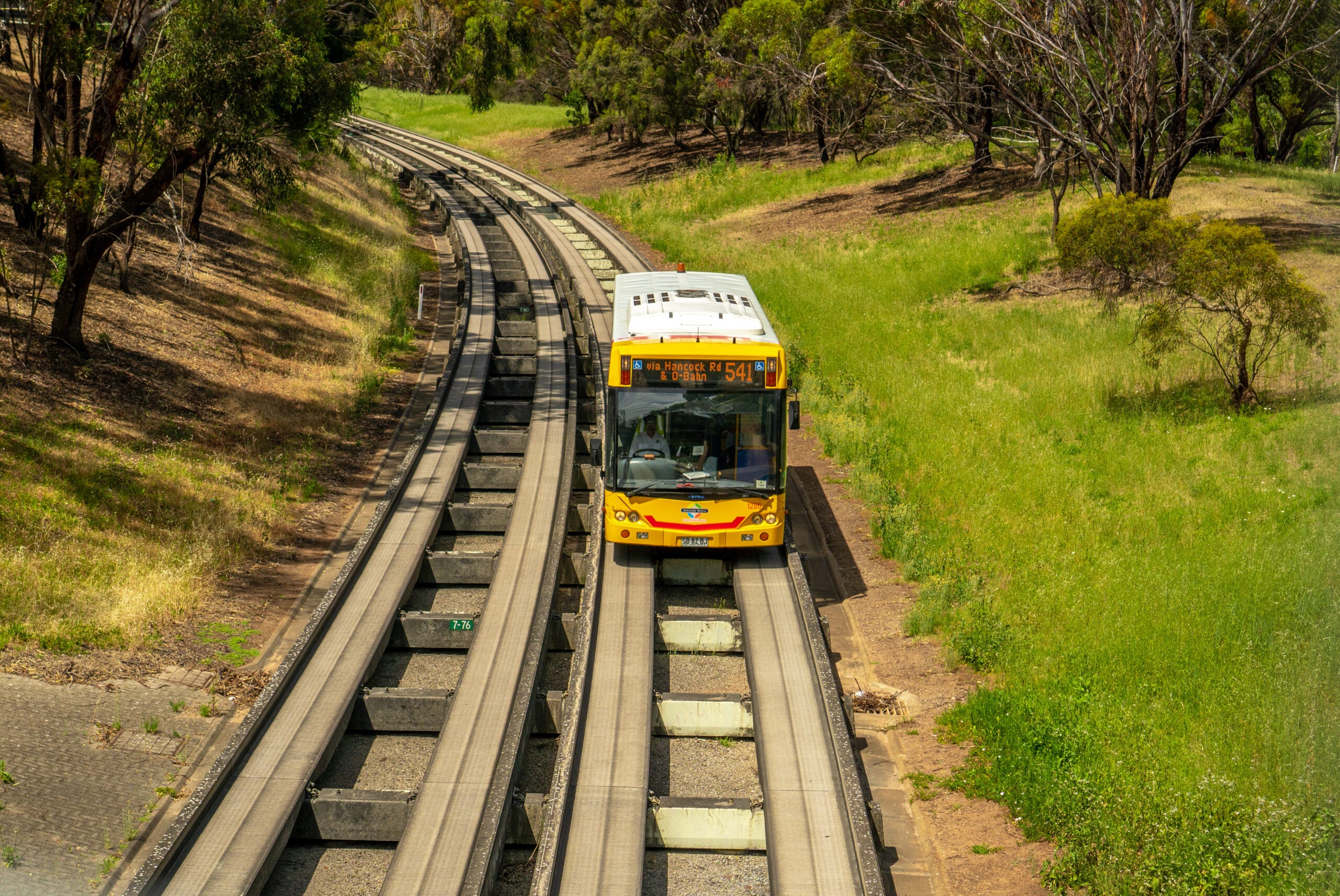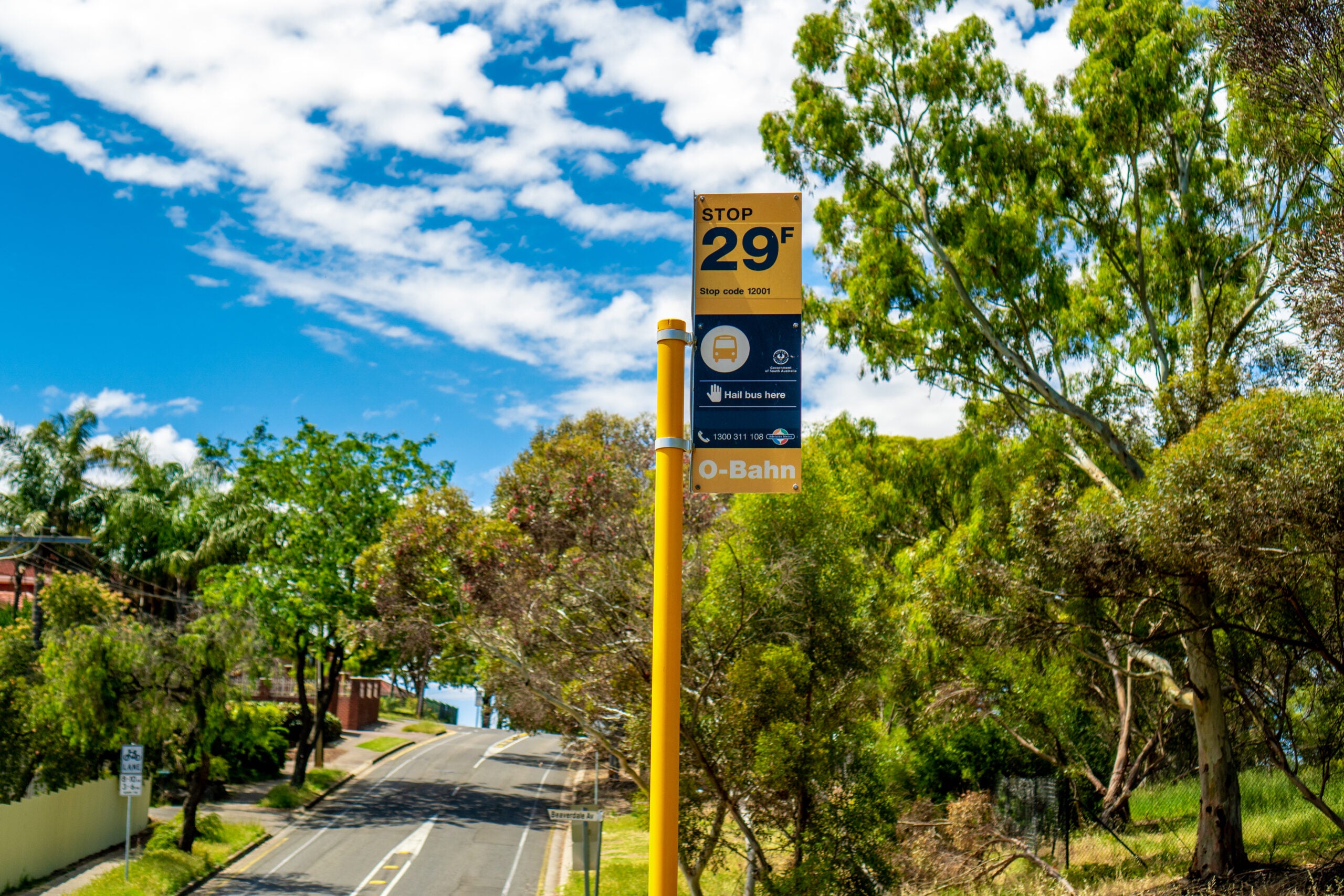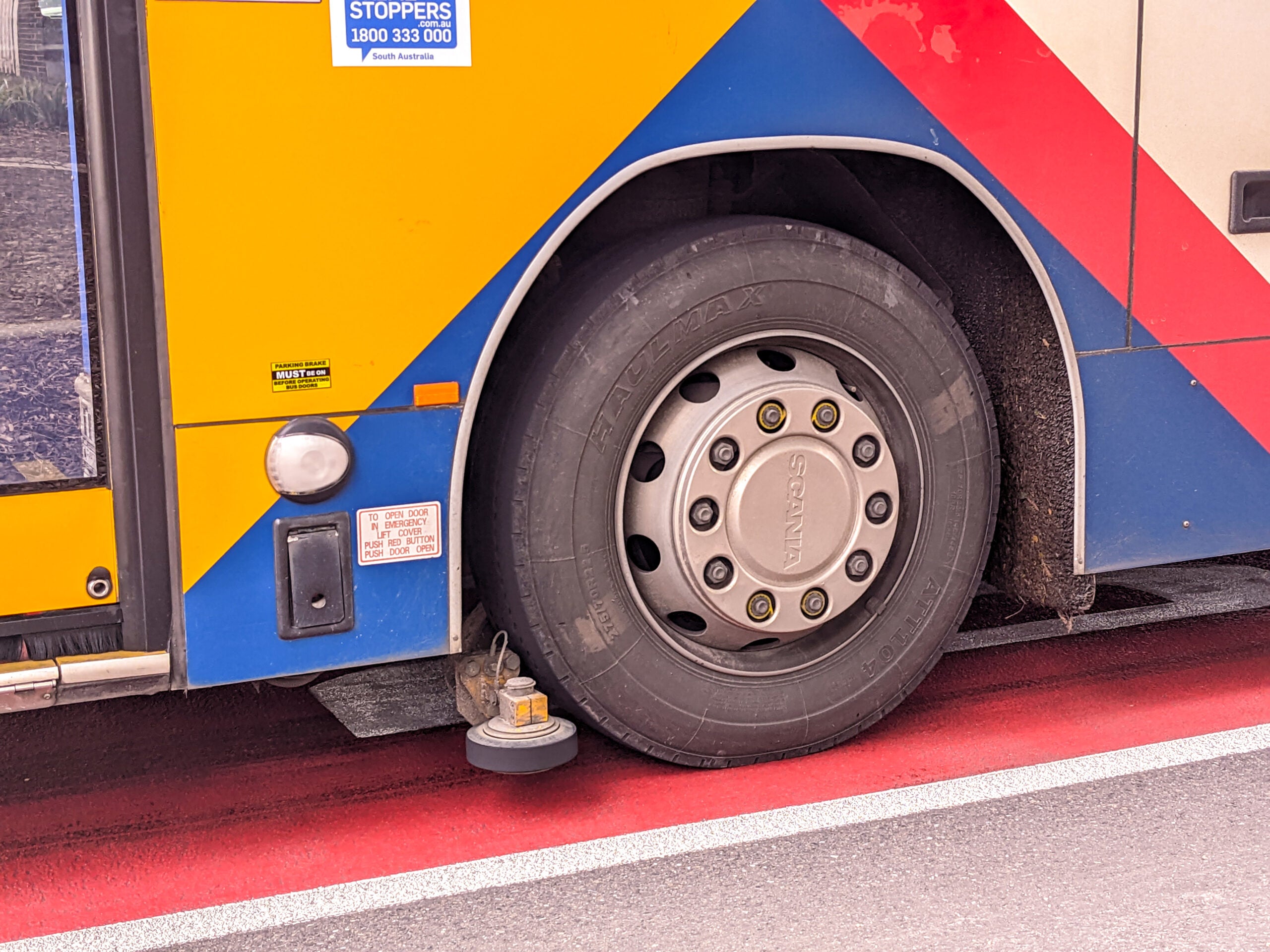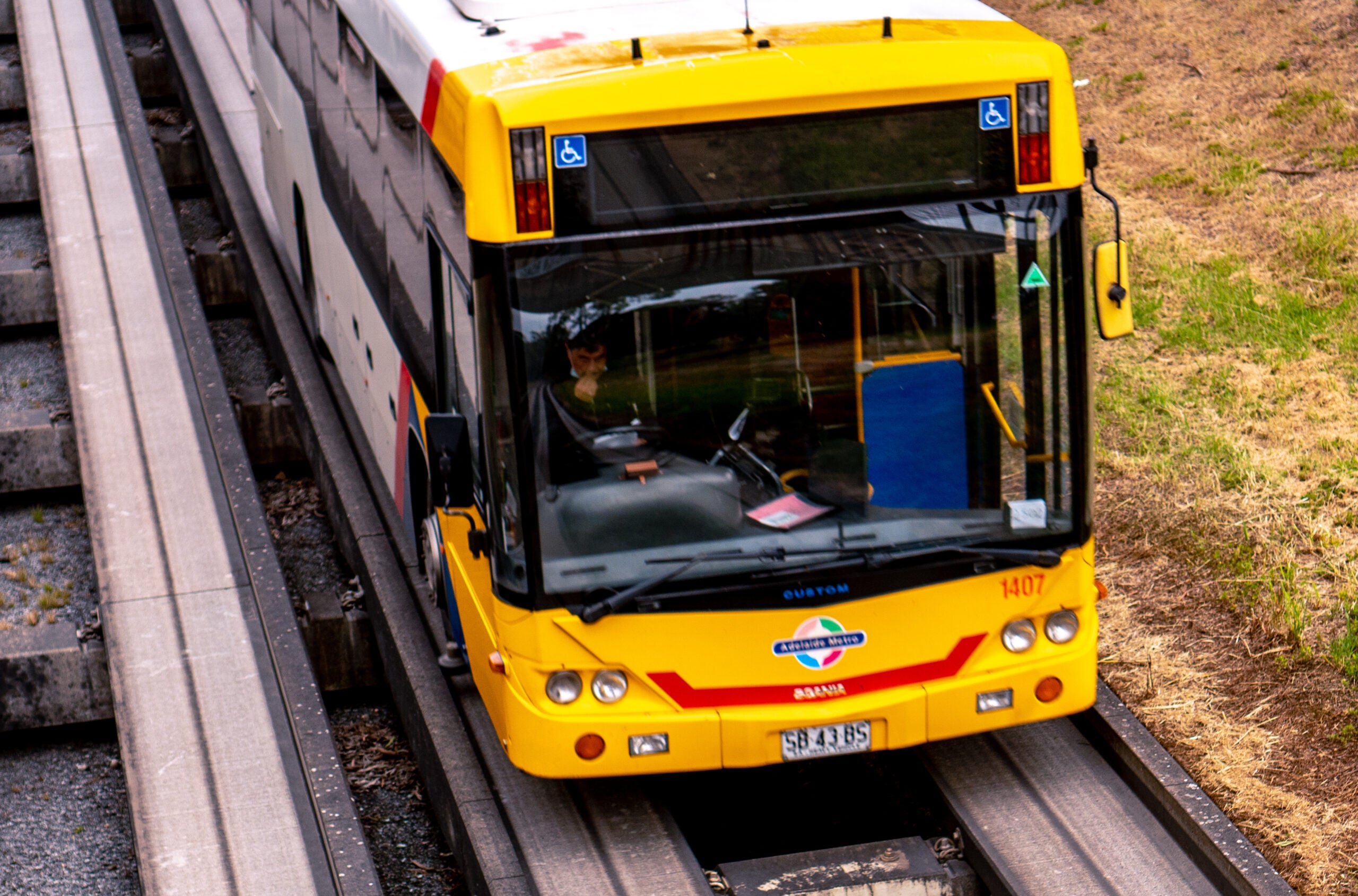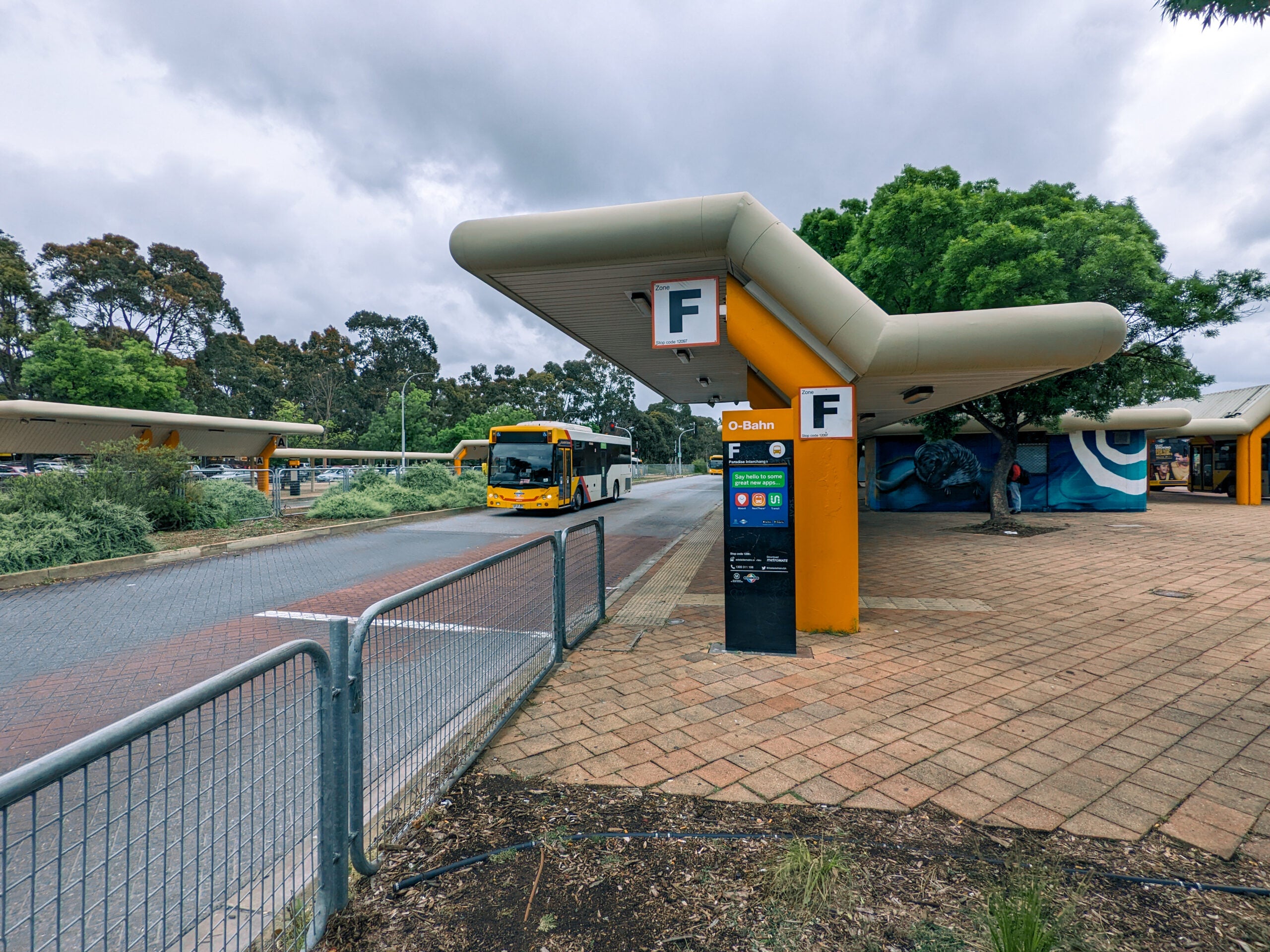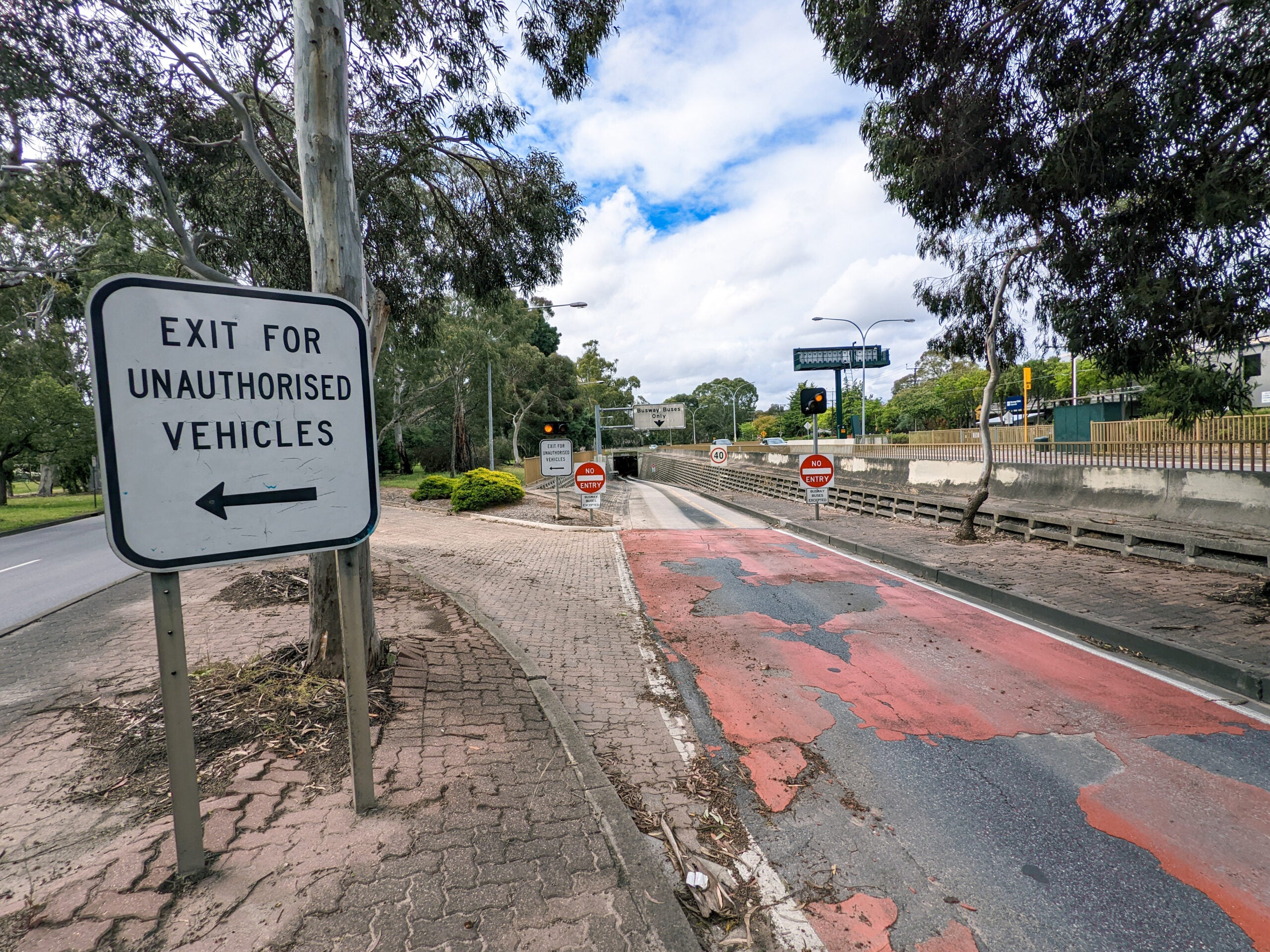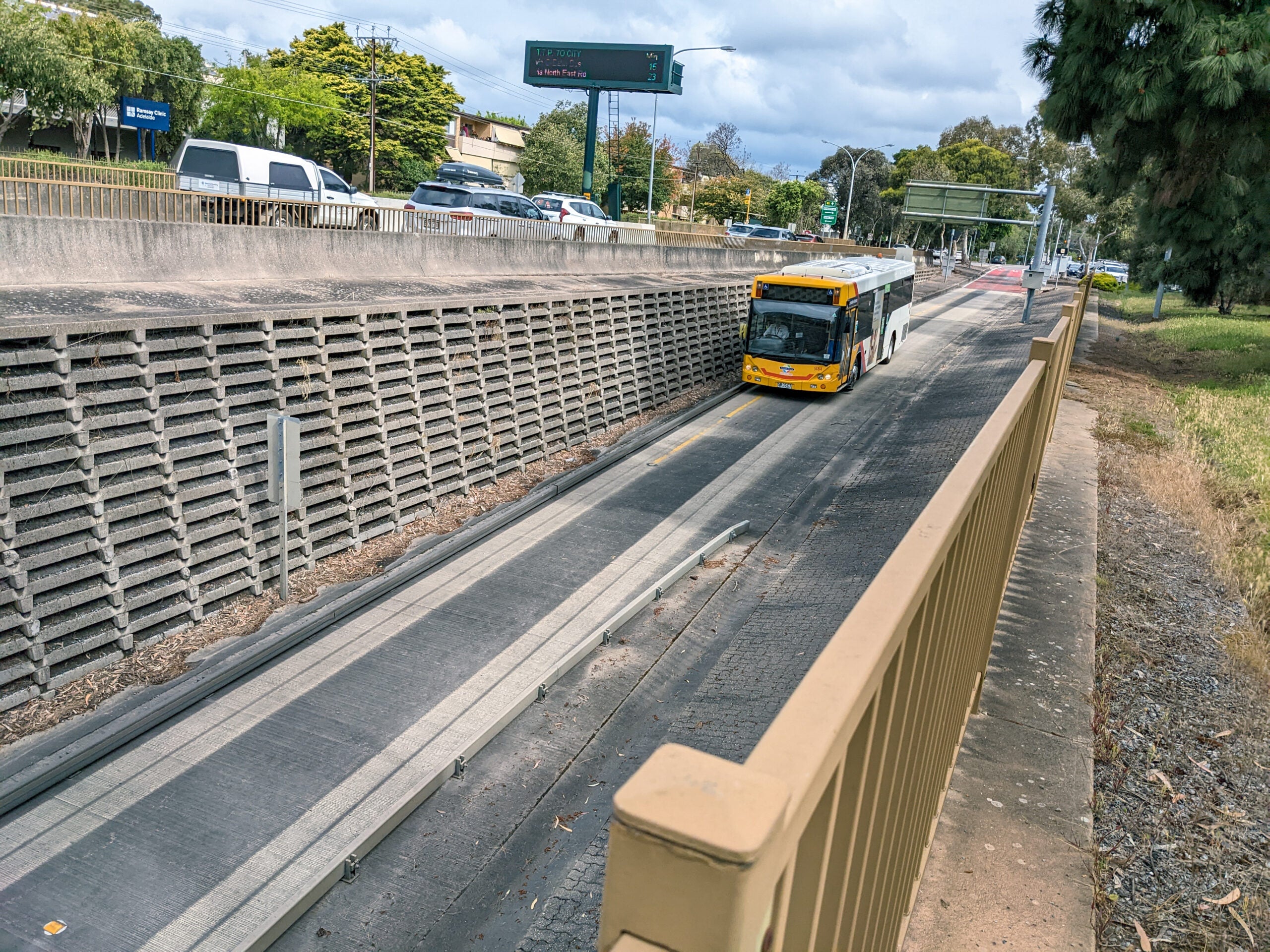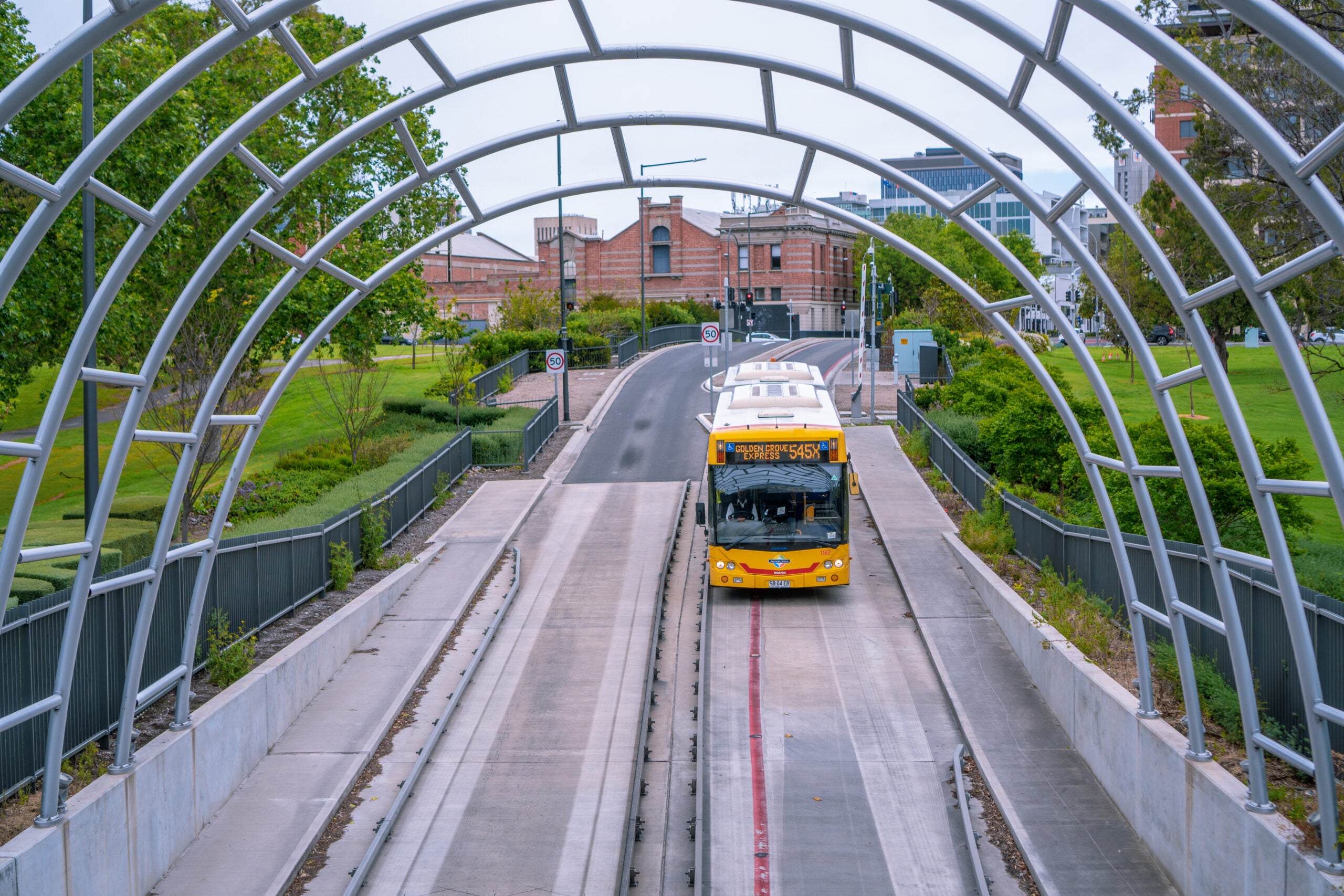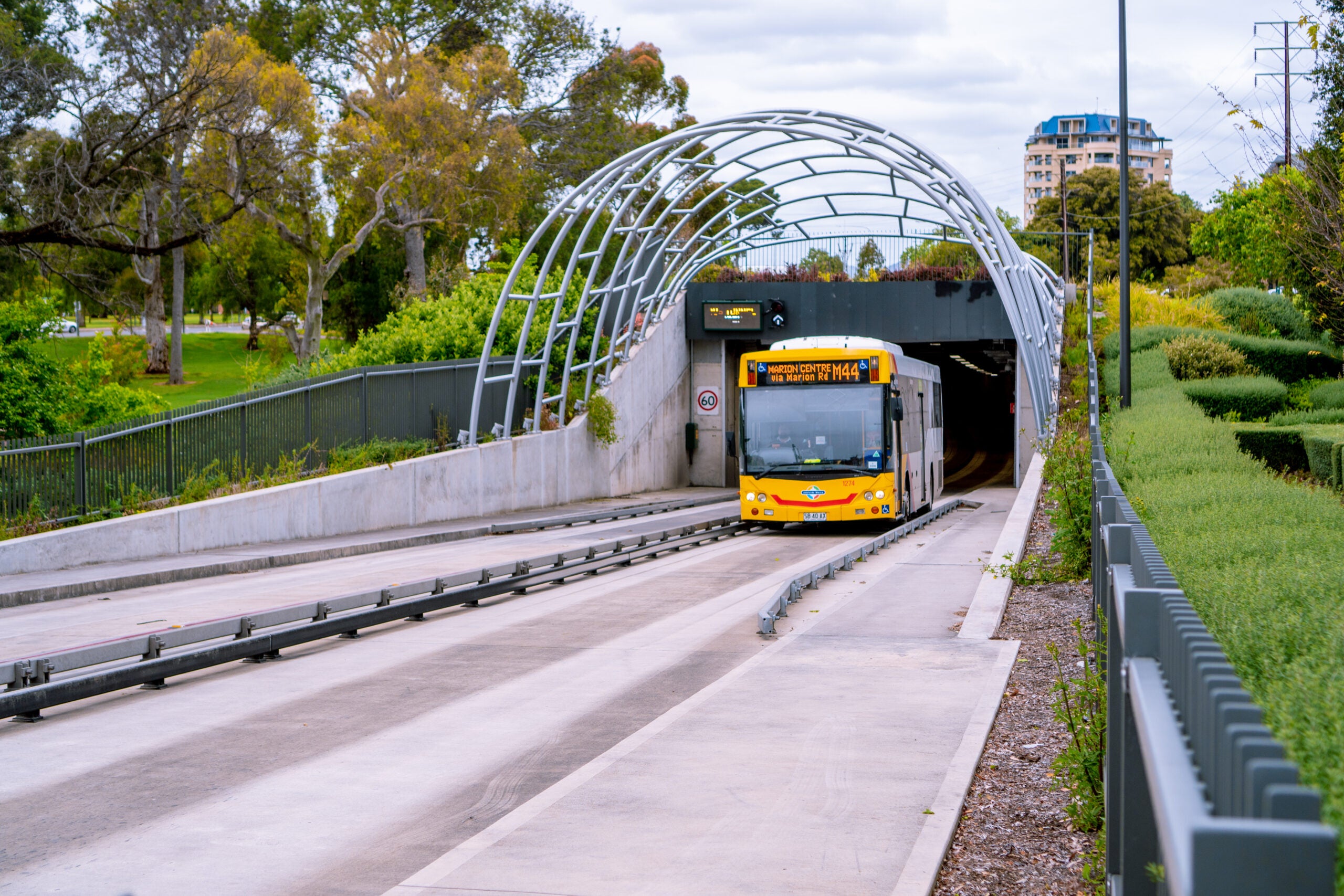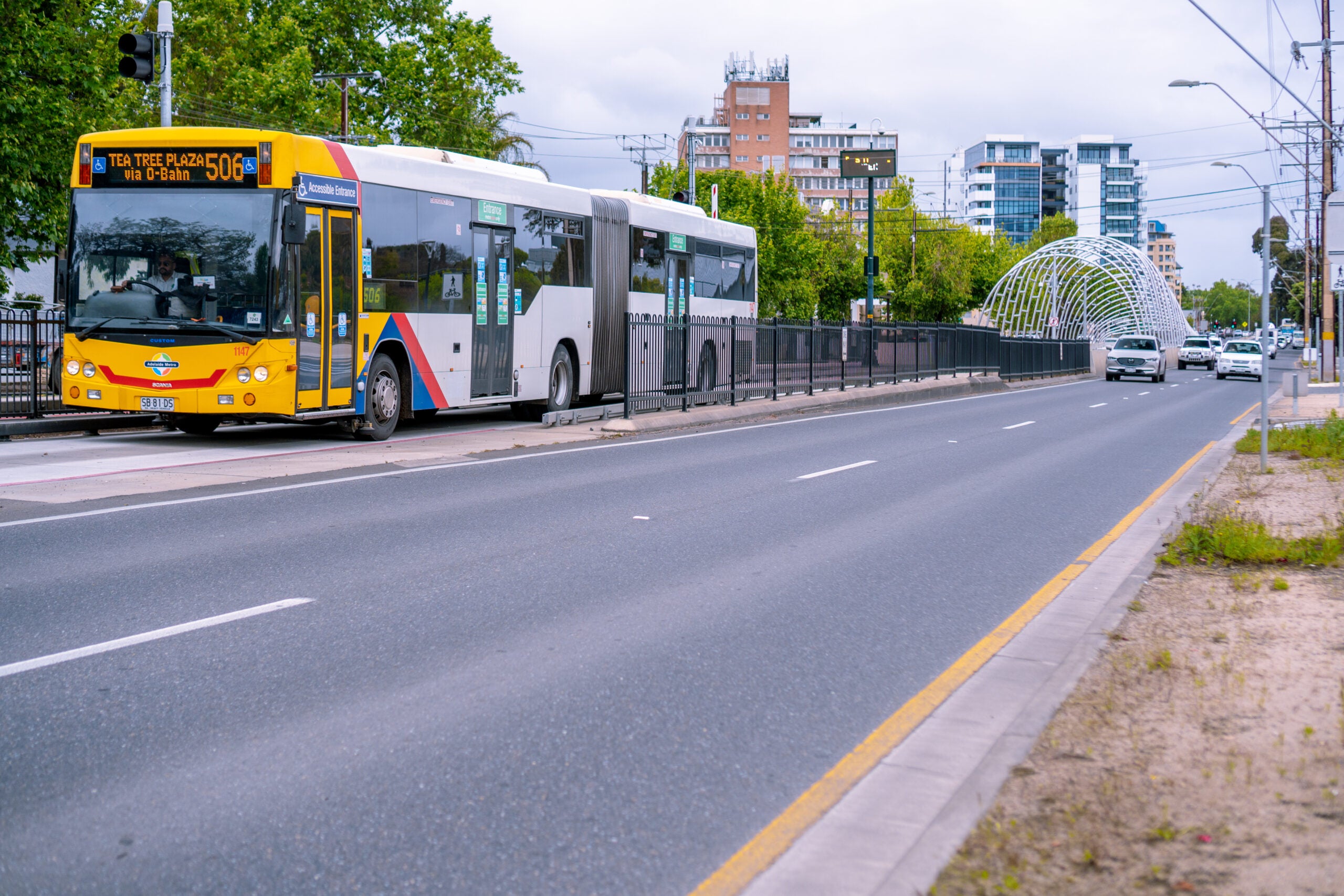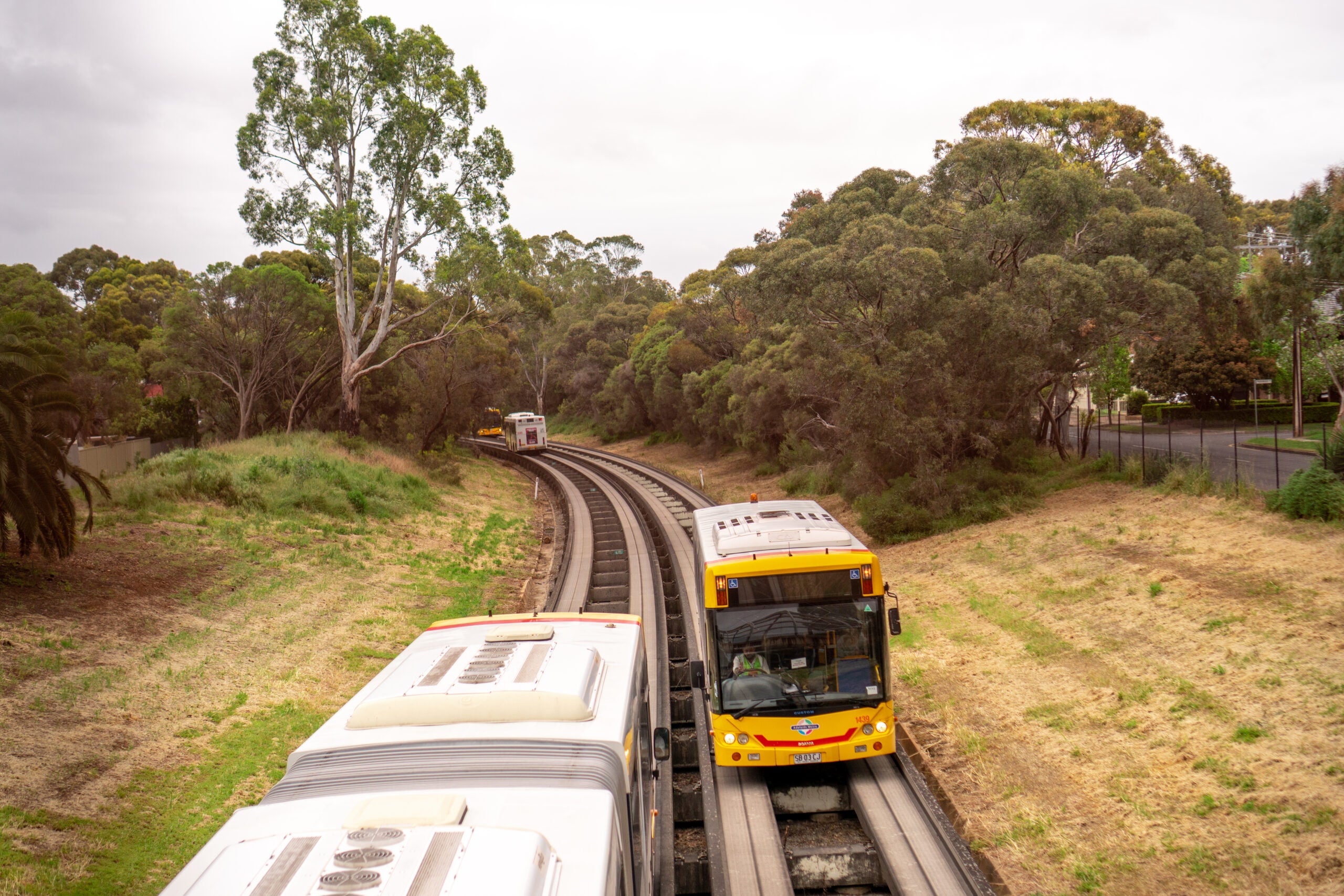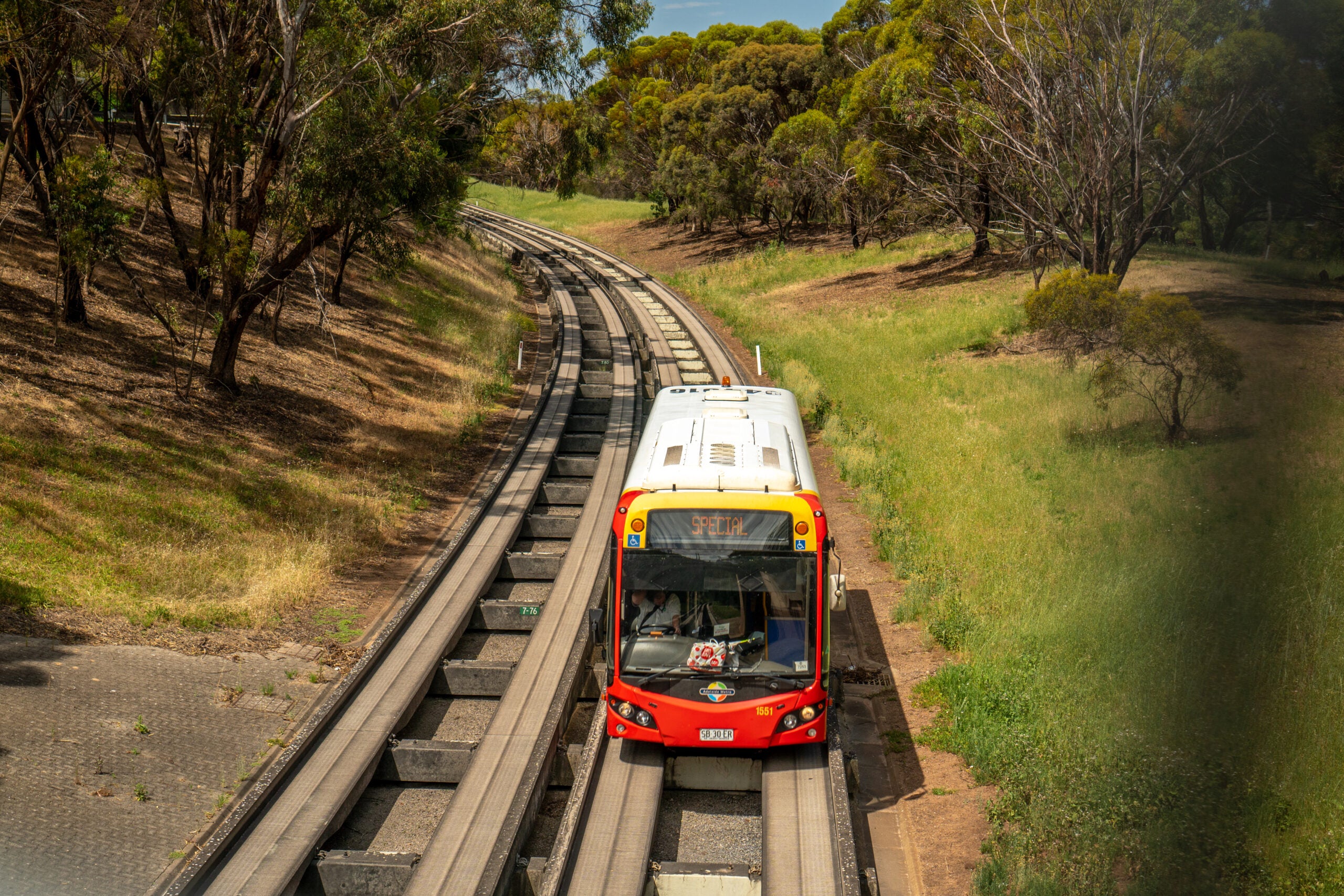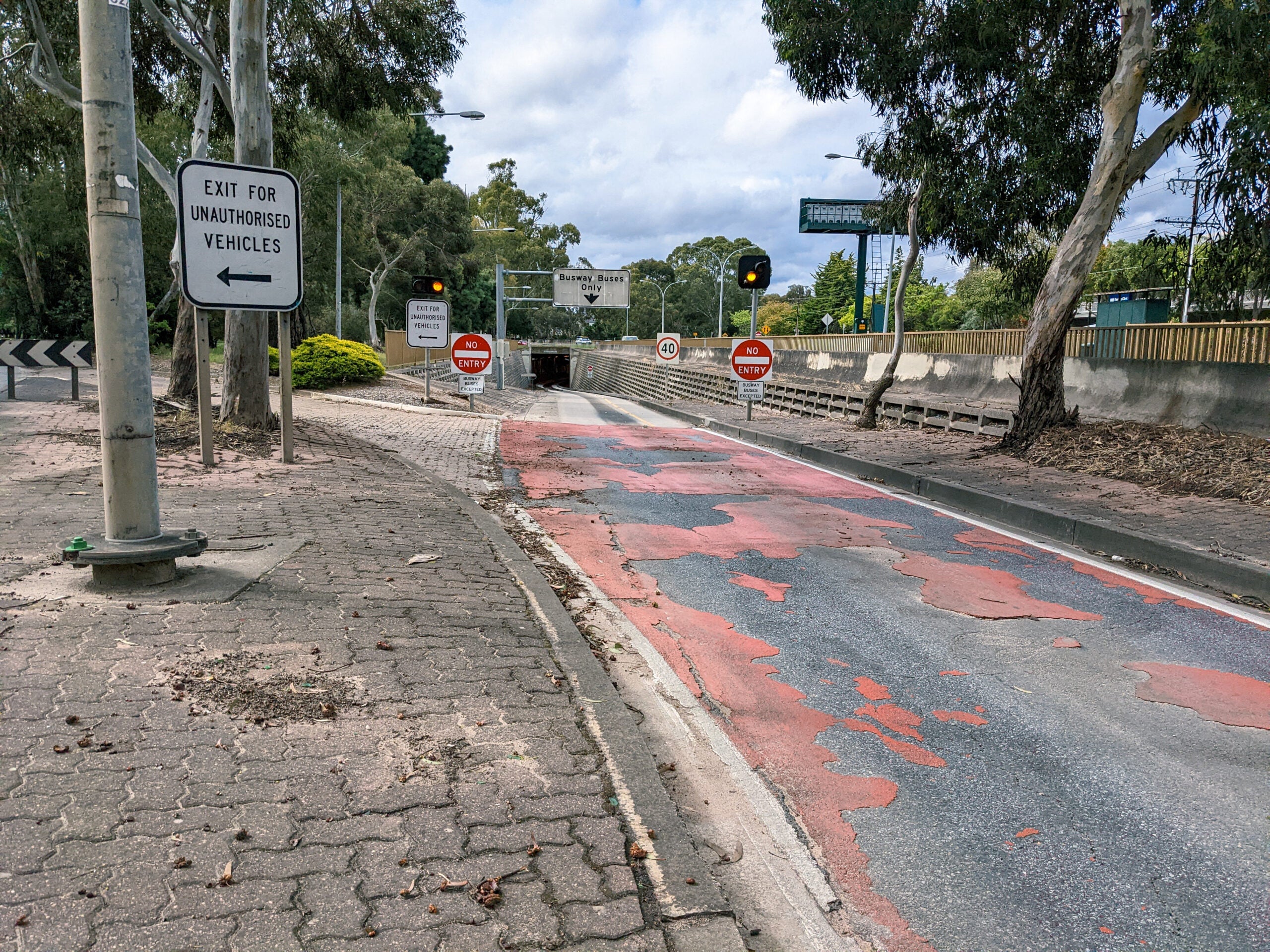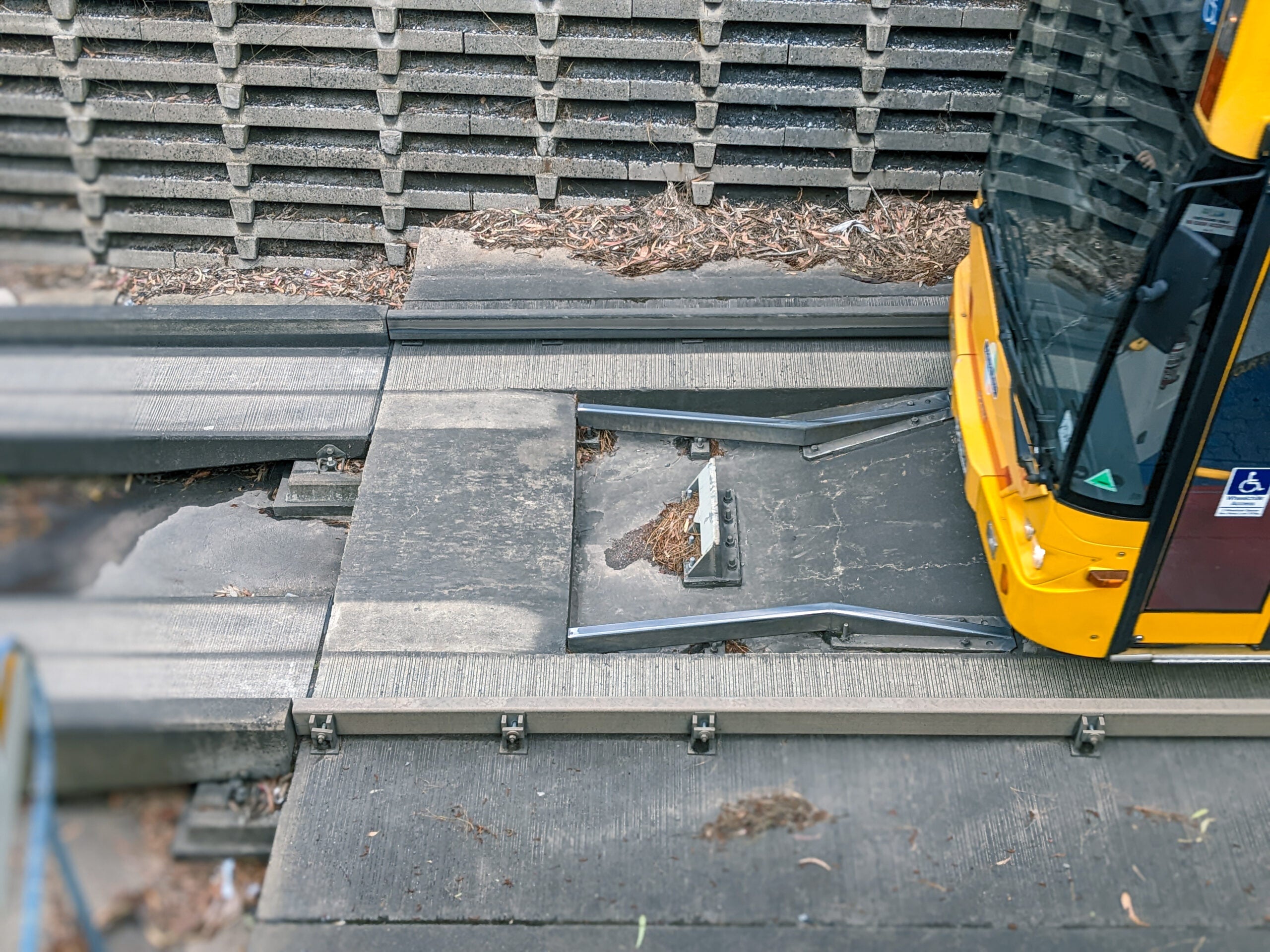Any kindergartener could tell you: Trains run on tracks and buses run on roads. Down under in Adelaide, Australia, though, things get a little more complicated.
The city’s special O-Bahn buses blur the line between a regular urban bus service and dedicated right-of-way transit. It’s an incredibly popular and efficient system that I, as a proud Australian, would love to see adopted in other cities. Not only does it cut down on congestion and traffic delays, but it’s also an example of a local municipality taking a chance on investing in an innovative mass transit system and watching it pay off massively.
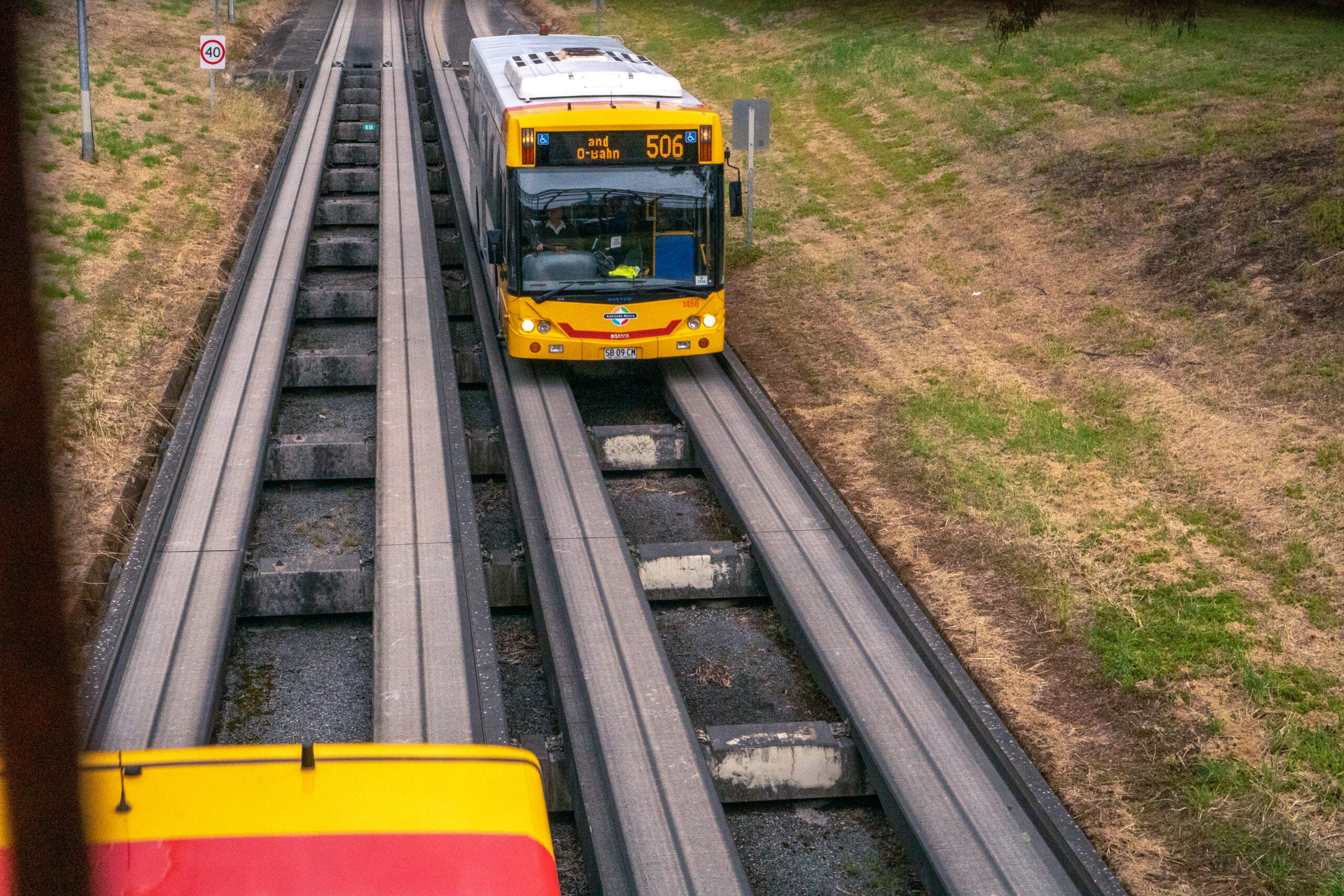
Let’s dive in and look at how it all came about and what makes this system special.
History
Adelaide’s O-Bahn Busway is a system of concrete tracks connecting the city’s northeastern suburbs with the central business district. O-Bahn buses run on these tracks, which provide them with a dedicated right-of-way, free of other traffic.
The curious system was developed by Daimler-Benz in West Germany in the 1970s. The O-Bahn name is a portmanteau of the German words for "bus" (“omnibus”) and "pathway" (“bahn,” as in “autobahn”). It was originally intended to allow buses to use narrow tunnels built for trams in the city of Essen. This would allow the buses to avoid peak-hour congestion by running underground. By using the existing underground light rail infrastructure, authorities did not have to construct new tunnels for the buses.

Ultimately, it was politics that helped bring the O-Bahn system to Adelaide. The state government of South Australia first developed the Metropolitan Adelaide Transport Study, or MATS, in the 1960s. It was an overarching plan that included 10 freeways along with a variety of rail networks and subways to help support the city’s burgeoning population.
With the plan in place, the government set about purchasing property along various corridors to connect the city to its growing suburbs. All up, the government budgeted $437 million in 1968 dollars for the acquisition and construction of the MATS network, or roughly $5.7 billion today (approximately $3.9 billion USD). It set $7.4 million aside to acquire tracts of land for a future-intended “Modbury Freeway” to the northeast, or roughly $96 million today ($65 million USD).
The O-Bahn's pedestrian underpasses and overpasses mean the network doesn't unduly break up the surrounding neighborhoods. The narrow nature of the O-Bahn track makes this much simpler compared to a large highway. Lewin Day
However, the MATS plan was deeply unpopular with the public. Citizens cited fears about neighborhoods being sliced up by freeway construction and opposed the scale of property acquisitions required for parts of the scheme. This was most concerning for the planned Noarlunga Freeway, which required the acquisition of over 3,000 properties and a budget more than four times higher compared to the Modbury Freeway. Public ire towards the scheme helped topple the reigning Hall government in the 1970 election, and shortly after, the new Dunstan government passed a 10-year moratorium on building any new freeways. This left the government with a corridor of land connecting the northeastern suburbs with the city and nothing to build on it.
But with the suburbs growing ever faster throughout the ‘70s, new transportation links were needed more than ever. A new government study investigated busways, light rail, or a traditional rail link to hook up the northeast. It decided on a light rail system—only for residents and city councilors to revolt against the idea because of the expected impact it would have on the city and surrounding areas.
The O-Bahn network was built in a land corridor originally set aside for the Modbury Freeway. With properties already acquired for the abandoned project, the O-Bahn plan faced fewer hurdles to its construction. Lewin Day
Not long after the Daimler-Benz O-Bahn project had begun operation in Essen, Germany, the South Australian government was still scrambling for a solution. Any new train and tram proposal was naturally expected to link up with the existing rail networks in Adelaide. Finding a way to carve them through the already-developed city added great complexity and expense.
However, bringing Germany’s system to Adelaide had the potential to solve the city’s problems. As a standalone bus network, the O-Bahn concept was free from these onerous constraints. The greatly simplified design reduced the impact on the heavily developed central business district. The guided busway was also expected to be quieter, cheaper, and take up less space.
Busway or the Highway
The final design involves a 12-kilometer track and three stops. The line begins at the Tea Tree Plaza shopping center, with two further interchanges at the suburbs of Paradise and Klemzig to the Adelaide ring road in Hackney. Stage one of the O-Bahn opened in 1986, linking the city to Paradise. Stage two added the connection to Tea Tree Plaza, and opened in 1989.
Street-level bus stops in surrounding suburbs are marked to indicate services that feed into the O-Bahn network. Access to the network is via the interchanges at Tea Tree Plaza, Paradise, and Klemzig. Street services can transfer directly on to the tracks, or in some cases, passengers leave one bus and get on to an O-Bahn service instead. Lewin Day
Additionally, the interchanges do not use the O-Bahn track. The buses leave the track and run on regular pavement through the interchange. This means that express services can pass slower all-stations services in these areas, thus improving the network throughput. It also allows access for suburban buses to feed passengers to O-Bahn lines along the route, rather than only at the Tea Tree Gully terminus.
O-Bahn buses also have the benefit of also being able to run on regular streets, picking up passengers along the way. Then, the buses can drive onto the O-Bahn Busway for high-speed transit into the city—thus operating as a high-throughput connection from the city to the suburbs because the buses can diverge from the Busway to deliver riders to specific destinations outside the O-Bahn network. Riders don't have to transfer between multiple bus, train, or tram services.
The way the Busway functions is ingeniously simple. The O-Bahn track consists of two concrete rails that have a vertical curb on the outside and are laid upon prefabricated concrete sleepers. The O-Bahn buses use special guide wheels that run along this vertical lip. The guide wheels are mounted on arms that are connected to the steering of the bus.
O-Bahn buses are guided by the curbs of the concrete track they ride on. Note the metal rails that help guide the bus into position at the start of the track. Top left: Government of South Australia, CC-BY-4.0, Others: Lewin Day
When an O-Bahn bus drives onto the concrete track, the guide wheels control the steering, and the driver handles the accelerator and the brakes. The track entry has special guides that funnel the bus into the center of the track and pick up the guide wheels. This allows the bus to gently transition onto the track with the driver letting the guide wheels take over the steering. It’s purely mechanical, and safer and more effective than any autonomous lane-keeping system.
There were some fears early on that the guide wheels might be broken off by hitting curbs or other street furniture through regular use. However, early testing proved that the O-Bahn buses could take the punishment on the road and on the concrete track.
The interchanges themselves don't use the O-Bahn track. This allows express services to pass slower buses, improving network throughput. Lewin Day
Working Out the Kinks
The ability of the buses to drive on regular roads was key to getting the O-Bahn across the line. However, some would say it was also the Adelaide network’s greatest failure.
Because the buses could run on regular roads, there was no need to create a tunnel into the city center as per the original light rail proposals. Instead, the buses would exit the O-Bahn system just outside of the Adelaide city center and onto the R1 ring road. They would then enter the city with regular traffic.
The original Hackney Road entry/exit of the O-Bahn, roughly two miles from the central business district. Lewin Day
This decision hurt the system. During the evening rush hour, it could take up to 20 minutes for a bus to leave the city and travel two miles on the ring road to the start of the O-Bahn track. The problem was just as bad for inbound buses every morning.
In spite of this, ridership grew and remained strong since the first stage of the project opened in the mid-’80s. In the small city of just one million people, there were four million passenger trips in the first year. That figure rose 30% the next year, and growth continued until the network was completed in 1989. By 2015, the O-Bahn was still going strong, serving approximately 31,000 passengers a day.
The O-Bahn City Access project built a tunnel from the R1 ring road into the city proper, connected to the original Hackney Road entry/exit by dedicated bus lanes. This gave the O-Bahn a dedicated right of way from Tea Tree Plaza all the way into the CBD. Lewin Day
With demand remaining high, the O-Bahn was granted a major upgrade: 2017 saw the opening of the O-Bahn City Access Project. This added a new tunnel to allow O-Bahn buses direct access to the city. The project included a small section of fenced-off bus lanes on the ring road to get buses from the original O-Bahn exit to the tunnel into town. This finally solved the O-Bahn’s last-mile problem and helped cut congestion on city streets, too.
The key benefit of the O-Bahn system is simply one of space. Consider a two-way dedicated unguided busway, also known as “a road without any cars.” Even a moderately trafficked two-lane road should be around 30 feet wide at minimum, as per Austroads design recommendations. This is necessary for wide vehicles to pass safely, given the natural wandering of a human driver in a lane. However, with two buses running on a guided concrete track, there’s no need for extra space. Two O-Bahn tracks only need a corridor about 20 feet wide, allowing the eight-foot-wide buses to pass in each direction safely.
That width-saving might not sound like much. However, when it comes to finding space for a new transportation artery through a crowded city, every last foot matters. It can result in huge savings by reducing the amount of property acquisition required to make room for the new project.
Much of the O-Bahn's track is built in a gentle depression, with earth on either side acting as an effective sound barrier for neighboring homes. Lewin Day
Quirky, Yet Capable
The city has fallen in love with the O-Bahn over the prevailing decades. Part of Adelaide culture is laughing at tourists and other foolish drivers who accidentally find their way onto the concrete tracks. This is despite significant signage advising drivers to stop and turn back. Additionally, the access routes typically feature large metal “sump busters” designed to destroy a car’s engine if it tries to access the track.
Wayward drivers that do find themselves on the tracks usually end up crashing after a short distance. In any given year, somewhere from one to four cars end up blocking the tracks. It’s Adelaide’s very own classic small-town news story.
However, in September, one driver who improperly accessed the tracks flipped the script. They were able to successfully drive from the city entry to the O-Bahn, all the way to the first interchange at Klemzig. They then left via regular public roads. That was particularly heartbreaking for this writer who has dreamed of achieving such a feat, but of course, hasn’t acted on it for the fear of harsh penalties.
Big flashing lights warn drivers not to drive into the O-Bahn network. A sump buster and tire trap are intended to discourage drivers further. Regardless, a few end up on the concrete tracks every year. The vast majority crash before reaching the first interchange. Lewin Day
Adelaide’s success has not gone unnoticed, either. Curb-guided busways in the same vein have since sprung up all over the UK. In most cases, their proliferation is due to the compact, noninvasive nature of the system. Similarly to Adelaide’s design, networks like the one in Cambridgeshire paired the guided busway with a picturesque walking and cycling trail. That’s something not usually achievable with trains or even light rail.
Adelaide’s O-Bahn is beautiful for several reasons. It shows us that when buses are given dedicated rights-of-way, they can be highly efficient at transporting thousands of people. It also demonstrates the flexibility of mixed-mode operation with a single vehicle. Plus, it’s just a bit weird, just a bit different, and there’s nothing more Adelaide than that! Well, maybe…
Got a tip? Let the author know: [email protected]
